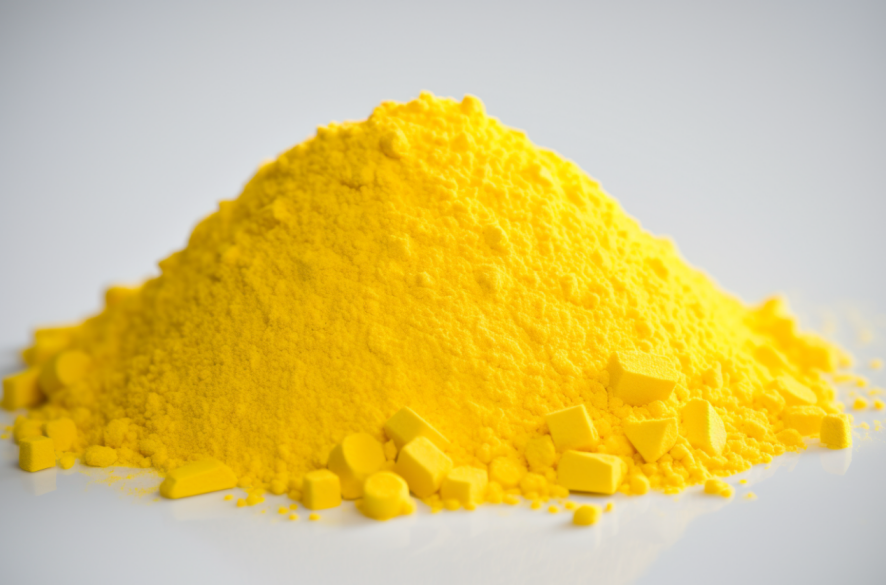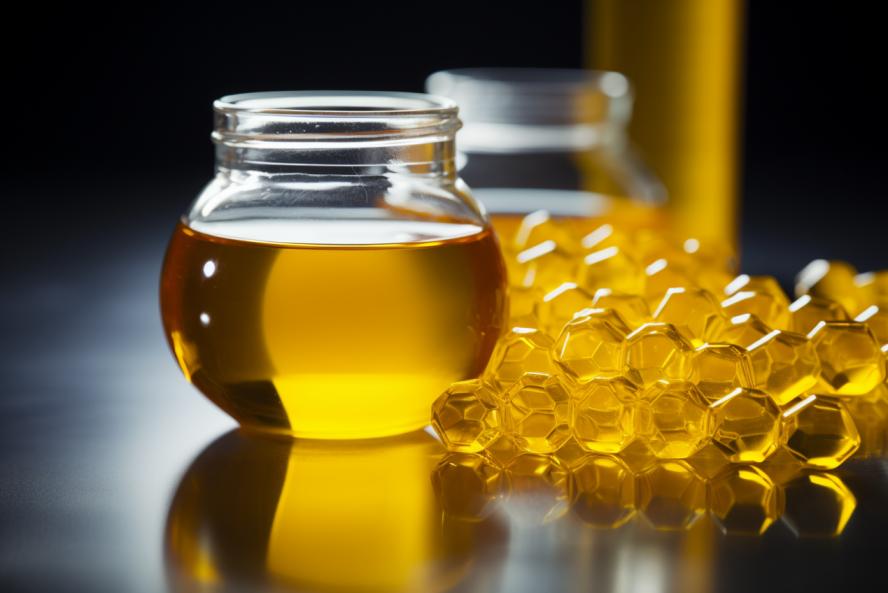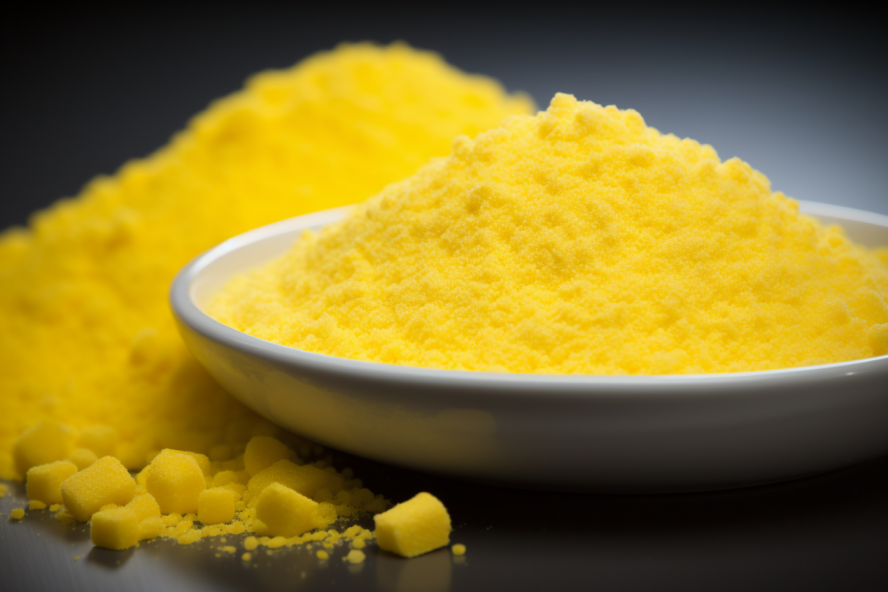Can DCBS Rubber Accelerator Improve the Performance of Industrial Rubber Products?
18/04/2024
Rubber accelerators play a crucial role in the rubber manufacturing industry, enhancing the process of vulcanization and improving the properties of rubber products. Among these accelerators, N, N-dicyclohexyl-2-benzothiazolesulfenamide, commonly known as DCBS, stands out for its unique properties and applications.
Introduction to DCBS Rubber Accelerator
1.1 Understanding Rubber Accelerators
Rubber accelerators are chemicals that expedite the vulcanization process, which involves the cross-linking of rubber molecules to strengthen the material. This process significantly improves the mechanical properties of rubber, including its strength, elasticity, and resistance to heat and chemicals.
1.2 Introduction to DCBS
DCBS, with its chemical formula C19H26N2S2, features a benzothiazole sulfenamide structure. It acts as a secondary accelerator in rubber compounds, facilitating the vulcanization process alongside primary accelerators such as MBT (2-mercaptobenzothiazole) or MBTS (2,2′-dibenzothiazyl disulfide).
1.3 A Brief History of DCBS
DCBS has a notable history within the rubber industry, dating back to its synthesis in the mid-20th century. Initially developed to address the need for accelerators with improved performance characteristics, DCBS has since become a staple in rubber manufacturing processes.
Chemical Composition and Structure of DCBS
2.1 Composition and Molecular Structure
DCBS comprises carbon, hydrogen, nitrogen, and sulfur atoms arranged in a distinct molecular structure. Its benzothiazole ring, coupled with the sulfenamide group and cyclohexyl moieties, confers unique reactivity and performance attributes.
2.2 Structural Contributions to Performance
The molecular arrangement of DCBS influences its functionality as a rubber accelerator. The presence of the sulfenamide group enhances its compatibility with rubber matrices, promoting efficient cross-linking during vulcanization. Moreover, the cyclohexyl groups impart stability and resistance to premature scorching, ensuring optimal processing conditions.

2.3 Comparison with Other Rubber Accelerators
In comparison to common rubber accelerators like MBT or MBTS, DCBS offers distinct advantages. Its slower activation rate provides greater control over the vulcanization process, minimizing the risk of scorching while maintaining robust curing characteristics. Additionally, DCBS exhibits excellent aging properties, contributing to the longevity and durability of rubber products.
Applications of DCBS in Rubber Industry
3.1 Enhancing Vulcanization Process
DCBS serves as a vital component in various rubber formulations, including tires, conveyor belts, and industrial hoses. Its role as a secondary accelerator complements primary accelerators, optimizing the vulcanization kinetics and ensuring uniform cross-linking throughout the rubber matrix.
3.2 Improving Rubber Properties
The incorporation of DCBS into rubber compounds enhances the mechanical, thermal, and chemical properties of the final products. By facilitating efficient cross-linking, DCBS contributes to superior tensile strength, elongation at break, and resistance to abrasion, heat, and aging. This translates to enhanced performance and extended service life in diverse applications.
3.3 Specific Applications and Benefits
In tire manufacturing, DCBS enables the production of high-performance tires with excellent traction, durability, and wear resistance. Moreover, its compatibility with various elastomers makes it suitable for a wide range of rubber goods, including automotive components, footwear, and seals. By imparting superior mechanical properties and aging resistance, DCBS ensures the reliability and longevity of these products in demanding operating conditions.
3.4 DCBS Rubber Accelerator Manufacturer: CHEMBROAD
CHEMBROAD, a leading manufacturer of rubber chemicals, specializes in the production of DCBS and other accelerators for the global rubber industry. With a commitment to quality, innovation, and sustainability, CHEMBROAD delivers premium-grade accelerators that meet the stringent requirements of modern rubber manufacturing processes. Leveraging advanced technologies and extensive expertise, CHEMBROAD continues to drive advancements in rubber chemistry, enabling customers to achieve superior performance and competitiveness in their markets.
Advantages and Disadvantages of DCBS
4.1 Advantages
DCBS offers several advantages as a rubber accelerator, making it a preferred choice for many manufacturers. Its effectiveness in promoting vulcanization, especially in conjunction with primary accelerators, ensures efficient cross-linking of rubber molecules, leading to enhanced mechanical properties such as tensile strength and elongation at break. Additionally, DCBS exhibits excellent aging resistance, prolonging the service life of rubber products and ensuring their durability in demanding applications.

4.2 Disadvantages
Despite its benefits, DCBS is not without limitations. One potential concern is its environmental impact, particularly during production and disposal. The synthesis of DCBS may involve the use of certain chemicals and processes that contribute to environmental pollution or pose risks to ecosystems. Moreover, exposure to DCBS or its byproducts may raise health concerns for workers involved in rubber manufacturing or end-users of rubber products. Proper handling and disposal practices are essential to mitigate these risks and ensure the safe use of DCBS.
4.3 Comparison with Other Rubber Accelerators
In comparison to other rubber accelerators, DCBS offers competitive performance and safety profiles. While primary accelerators like MBT and MBTS are commonly used in rubber formulations, DCBS serves as a reliable secondary accelerator, providing additional benefits such as improved aging resistance and processing stability. Moreover, DCBS exhibits lower toxicity and reduced risk of allergic reactions compared to certain accelerators, making it a preferred choice for applications where safety is paramount. However, each accelerator has its unique characteristics and applications, and the selection depends on specific requirements and performance criteria.
Environmental and Safety Considerations of DCBS
5.1 Environmental Impact and Health Risks
The environmental impact of DCBS primarily stems from its production process and potential release into the environment during rubber manufacturing or disposal. While DCBS itself is not highly toxic, certain intermediates or byproducts generated during its synthesis may pose risks to ecosystems or human health if not properly managed. Additionally, exposure to DCBS dust or vapors in occupational settings may lead to respiratory irritation or allergic reactions, highlighting the importance of adequate ventilation and personal protective equipment.
5.2 Regulations and Guidelines
Regulatory agencies worldwide impose strict guidelines and regulations governing the use of DCBS and other rubber accelerators to ensure their safe handling and environmental compliance. These regulations may include restrictions on permissible levels of hazardous substances, requirements for labeling and packaging, and guidelines for waste management and disposal. Compliance with these regulations is essential for manufacturers to uphold safety standards and minimize environmental impacts throughout the product lifecycle.
5.3 Efforts Towards Sustainability
In response to growing environmental concerns, researchers and manufacturers are actively exploring eco-friendly alternatives to traditional rubber accelerators like DCBS. These efforts focus on developing sustainable synthesis routes, utilizing renewable resources, and minimizing the use of hazardous chemicals. Additionally, innovations in rubber compounding and processing technologies aim to reduce reliance on accelerators altogether, further advancing the sustainability of rubber manufacturing. While challenges remain, the ongoing research and development in this field hold promise for creating safer, more environmentally friendly solutions for the rubber industry.
Recent Developments and Research on DCBS
6.1 Advancements in Synthesis and Formulation
Recent studies and research efforts have focused on optimizing the synthesis and formulation of DCBS to enhance its performance and sustainability. Innovations in catalyst design, reaction conditions, and purification techniques have led to improved yields, purity, and efficiency in DCBS production. Furthermore, advancements in rubber compounding and processing have enabled the development of novel formulations incorporating DCBS with synergistic additives to achieve superior properties and performance in rubber products.

6.2 Emerging Trends and Future Directions
Looking ahead, the future of DCBS-based rubber accelerators is shaped by emerging trends and technological advancements in the rubber industry. Key areas of focus include the development of greener and safer alternatives to traditional accelerators, the integration of sustainable practices throughout the supply chain, and the adoption of digital technologies for process optimization and quality control. Moreover, collaboration between academia, industry, and regulatory bodies is crucial for driving innovation and shaping the future landscape of rubber chemistry. As research continues to advance, DCBS and its derivatives are poised to play a vital role in meeting the evolving demands of the global rubber market while addressing environmental and safety concerns.
Conclusion
In conclusion, the DCBS rubber accelerator plays a pivotal role in the rubber industry, enhancing the vulcanization process and improving the properties of rubber products. With its unique chemical structure and exceptional performance characteristics, DCBS offers manufacturers a versatile solution for optimizing rubber formulations across various applications. As a trusted partner in rubber chemistry, CHEMBROAD remains at the forefront of innovation, providing customers with reliable and sustainable accelerators to meet their evolving needs.




